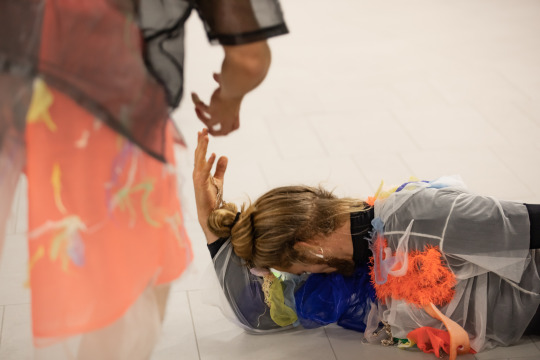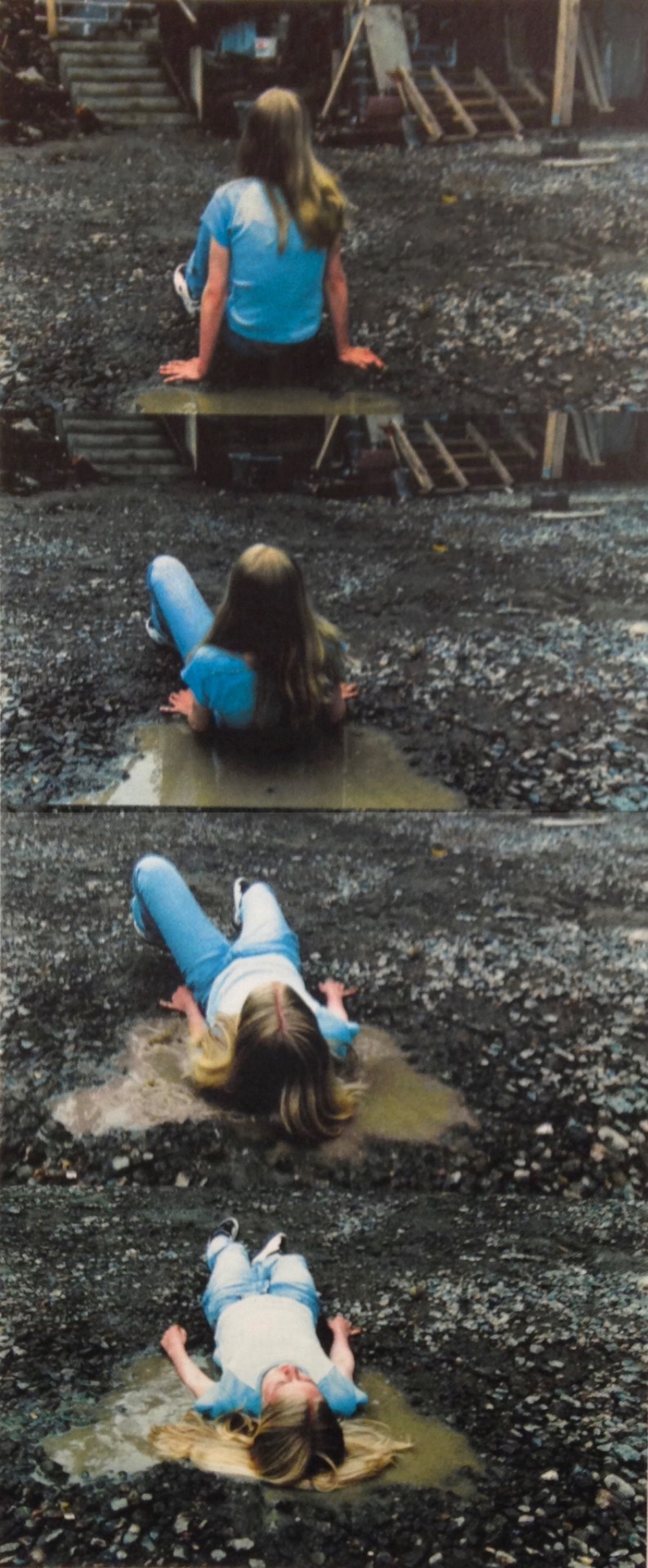#eija liisa ahtila
Photo

Hänen absoluuttisessa läheisyydessään, 1988
Eija-Liisa Ahtila, Maria Ruotsala
21 notes
·
View notes
Photo

Eija-Liisa Ahtila
18 notes
·
View notes
Text
Urgent call to protect 360,000 hectares: Supported by well-known people from various fields of art, the petition emphasizes the immediate protection of the 360,000-hectare state fo...
0 notes
Photo

Nature Untitled / Movements I-III, 2022
Veli Lehtovaara, Eija-Liisa Ahtila & Jani Hietanen
Oil Silo 468, Zodiak Stage, Redi Shopping Center
Choreography: Veli Lehtovaara in collaboration with the performers
Performers: Elias Girod, Anni Koskinen, Sofia Simola, Matilda Aaltonen, Erik Eriksson, Inga Huld Hákonardóttir, Kevin Fay
Space, scenography and moving image: Eija-Liisa Ahtila
Sound design: Jani Hietanen
Costume design: Piia Rinne (movement I & III, movement II with Heide Vanderieck)
Light design: Luc Schaltin (movement II), Anton Verho (movement I original design, adaptation Anna Pöllänen)
Dramaturgical support: Merel Heering
Environmental educator: Riitta Nykänen (movement III)
Cinematography: Pekka Uotila (movement I), Arto Kaivanto (movement II)
Edit: Heikki Kotsalo
Production assistant: Sofia Charifi
Production: Entirely Moved
Co-production: Zodiak, Moving in November, Institut finlandais
Productional support: Arts Management Helsinki
Photo: Sinem Kayacan
1 note
·
View note
Photo



“Today/Tänään” (1997) - Eija-Liisa Ahtila
Video installation, Klemens Gasser und Grunert, Cologne, Germany
368 notes
·
View notes
Photo

Eija-Liisa Ahtila - Where Is Where? 2008
5 notes
·
View notes
Photo


Talo/The House, 2002, Eija-Liisa Ahtila
dailymotion
1 note
·
View note
Photo

Hänen absoluuttisessa läheisyydessään, 1988
Eija-Liisa Ahtila, Maria Ruotsala
4 notes
·
View notes
Photo

Eija-Liisa Ahtila
16 notes
·
View notes
Text

VISIONS DE MANDIARGUES
MODERNITÉ, AVANT-GARDE, EXPÉRIENCES
Alexandre Castant, Iwona Tokarska-Castant
Dans Visions de Mandiargues, essai sur André Pieyre de Mandiargues (1909-1991), écrivain, poète, critique d’art, surréaliste de la seconde génération et auteur passionné par l’image dont il a constamment irrigué son écriture, sont d’abord invités les œuvres ou les témoignages de ses contemporains : écrivains (André Breton, Alejandra Pizarnik, William Burroughs), artistes et plasticiens (Leonor Fini, René Magritte, Wifredo Lam), photographes (Hans Bellmer, Henri Cartier-Bresson, Man Ray) ou cinéastes (Michelangelo Antonioni, Walerian Borowczyk, Nelly Kaplan). Mais aussi, au fil de brèves liaisons imaginées et contre toute attente, apparaîtront les citations d’œuvres d’artistes contemporains dont l’univers, à de multiples égards, propose un reflet de son esthétique dans le champ de la peinture et des plasticiens (Claude Lévêque, David Reed, Philip Taaffe), de la photographie (Martine Aballéa, Denis Roche, Hiroshi Sugimoto), de la vidéo (Kenneth Anger, Eija-Liisa Ahtila, Bill Viola), du théâtre (Jan Fabre, Jacques Vincey, Krzysztof Warlikowski) ou du cinéma (David Lynch, Raoul Ruiz, Apichatpong Weerasethakul). Dès lors, fortes de ce nouvel éclairage, des thématiques telles que l’œuvre de Marcel Duchamp ou le baroque, l’art des jardins ou la sémiologie, l’érotisme ou la plasticité des images mentales, la notion de genre ou celle de livre d’artiste composent Visions de Mandiargues pour approcher l’incandescente modernité de son écriture : son expérience au xxie siècle. Enfin, des photographies, respectivement de Bernard Plossu, Bona Pieyre de Mandiargues, Florence Chevallier, Érik Bullot, Gérard Macé, Nicolas Comment, Sara Imloul, Kourtney Roy, Muriel Pic et Françoise Nuñez, ouvrent chaque chapitre de Visions de Mandiargues comme une invitation de l’image à l’écriture qui pourrait en être l’écho.
A. C. & I. T.-C.
filigranes.com
5 notes
·
View notes
Text
my first step into my short film; this is the first half of a stop motion animated flower blooming and then dying. i put the ‘birth’ on a loop, making it look like it’s breathing which i really love. as i haven’t completed the ‘death’ yet, i was playing around with the looping and editing and put the loop over a picture i took of some trees in a forest in picsart and used the ‘blend’ tool (difference). i love that the trees are cold and lifeless and that the flower blooming is what gives it colour and brings the trees back to life. it could be seen as a message about nature breathing air into our world.
there was an exhibition at the hayward gallery that i find myself constantly searching up, wishing i was able to experience. the ‘Among the Trees’ exhibition explores the relationship between humans and trees which is the themes i am looking into for my painting and my short film.
artists like Shi Guowei and Eija-Liisa Ahtila capture the movement and life within trees in contrasting ways. Guowei’s ‘Pine’ (2016) is a painting on photography of an ancient pine tree. because of its’ grandeur, i can’t tell whether he shot the tree looking up or looking down. i tried to research more about the piece, and finally found an article that put my thoughts exactly, into words; “...he produces a glorious sense of euphoria. perched like a bird among a tangle of limbs that seem to have no trunk supporting them, you can’t tell which way is up and which down.” Guowei captures the ancient pine’s greatness, along with its magnificence in the way he has layered different images. he’s combined multiple black and white photos and then hand painted over those images to create this fairy-tale moving photo. similar to Guowei’s ‘Pine’, Eija-Liisa Ahtila’s ‘Horizontal - Vaakasuora’ (2011) is mesmerising. it’s a digital ‘portrait’ of a spruce tree that i could sit and watch forever. accompanied by a soundscape of creaking trunks, wind and bird songs, Ahtila’s moving portrait creates the same sense of bliss that Guowei does. she took her portrait of the spruce and showed it horizontally and in 6 parts. i think the placement and orientation emphasises the grandness of the tree while also creating a feeling of disorientation. this, along with the gushing winds that aggressively guide the branches, reminds me of ‘Pine’. while one moving and the other still, both pieces express fluidity and the human movements in striking trees.
adding a moving image over a still one, in the way i layered my animation over an image of a forest, combines the techniques of Guowei and Ahtila. both are full of life and gesture, yet are presented in entirely contrasting forms. i want to use these techniques in the natural shots in my short film which will be interesting as the tress around me aren’t as grand and magical.


source: theartsdesk.com
9 notes
·
View notes
Text
Reading Response #2



“Today/Tänään” (1997) - Eija-Liisa Ahtila (Video Installation)
Chapter #6: Time & Motion
As Terry Barret discussed in his book, as artists and designers, we always have to consider “different aspects of time” (120) and motion while creating our works. This chapter provides me a lot of inspiring examples about how artists include time and motion as crucial components in order to express their intentions through art. I especially enjoy the way Barret used Chris Wedge’s Bunny - an Academy Award winning short animated movie as an excellent example for implied time. For instance, although the film just have seven minutes of screen time, the director can involve the implication of eternity, in which helps the movie “invites interpretations of a serious topic through cartoon character.” (122). In general, this chapter indeed shows me the importance of time and motion, in which they can affect the audience’s experiences and feelings toward the artworks.
Sean Cubitt, “Vanishing and Becoming” (2005)
In the essay “Vanishing and Becoming”, Sean Cubitt proposed his idea about the first medium of art is not drawing, but light and projection. Personally, I find it is prone heavily to philosophy rater than practical demonstration because of its lack of relatable examples, which might be the reason why it is quite difficult to be fully understood. However, by Cubitt’s series of examples about the various potentialities and affects of projection in comtemporary art through a rich history when the artists have used a host of other methods, not just simply project their artworks onto white wall or silvered screen. For example, I am particularly impressed by the idea of projection from the 1994 People’s Show in Manchester; instead of perfect white wall, the artists decided to use a corrugated screen, therefore, with different perspectives, the audience were able to observed a new aspect of their works.
51 notes
·
View notes
Text
thinking about eija-liisa ahtila’s fisherman etudes. saw a picture of it i had taken in 2013. saw it again last year. so so deeply moved by that piece.
2 notes
·
View notes
Photo

Eija-Liisa Ahtila: Ecologies of Drama: Collected Writings,... https://ift.tt/2BVjUse
9 notes
·
View notes
